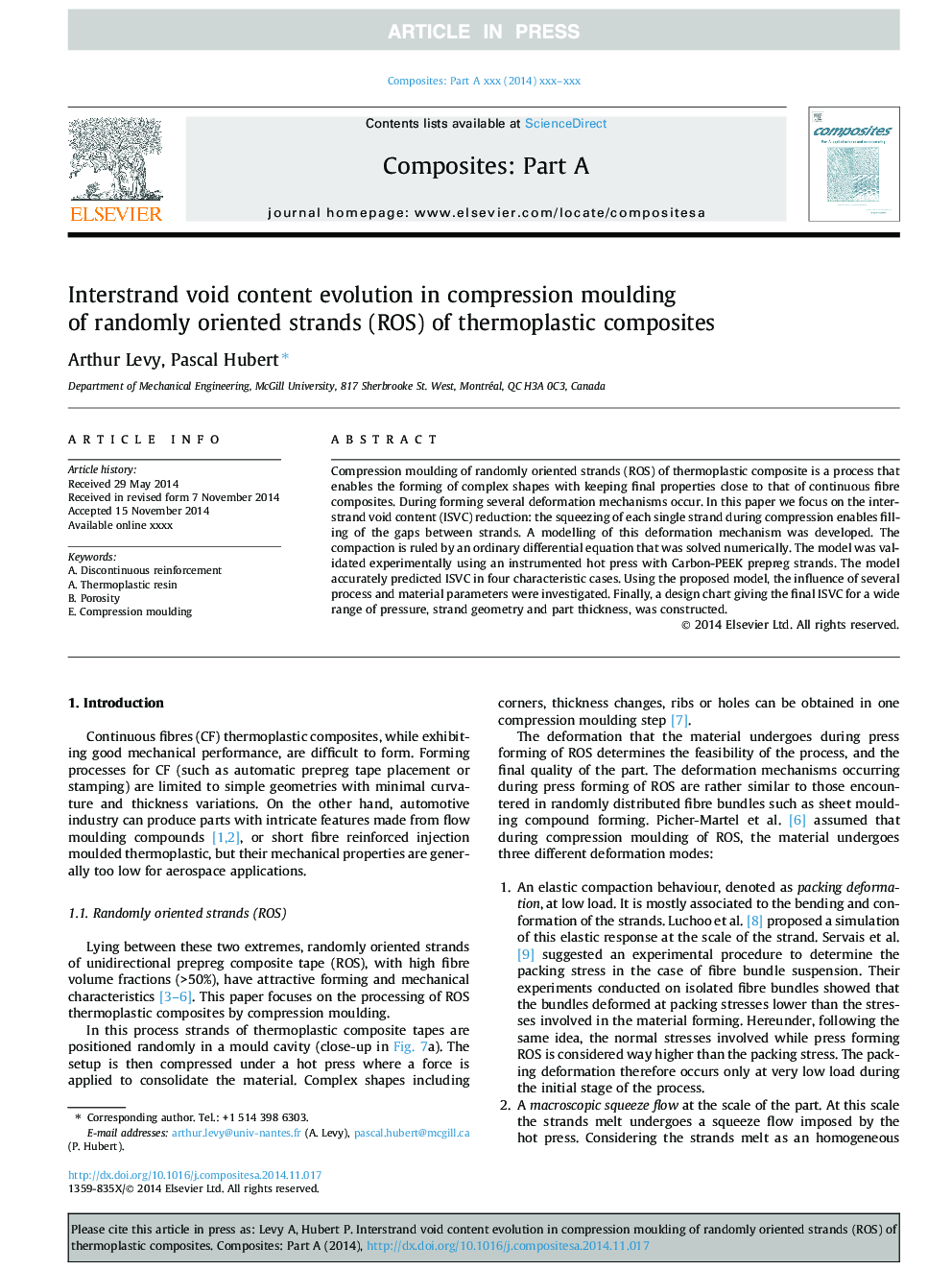| Article ID | Journal | Published Year | Pages | File Type |
|---|---|---|---|---|
| 7892013 | Composites Part A: Applied Science and Manufacturing | 2015 | 11 Pages |
Abstract
Compression moulding of randomly oriented strands (ROS) of thermoplastic composite is a process that enables the forming of complex shapes with keeping final properties close to that of continuous fibre composites. During forming several deformation mechanisms occur. In this paper we focus on the interstrand void content (ISVC) reduction: the squeezing of each single strand during compression enables filling of the gaps between strands. A modelling of this deformation mechanism was developed. The compaction is ruled by an ordinary differential equation that was solved numerically. The model was validated experimentally using an instrumented hot press with Carbon-PEEK prepreg strands. The model accurately predicted ISVC in four characteristic cases. Using the proposed model, the influence of several process and material parameters were investigated. Finally, a design chart giving the final ISVC for a wide range of pressure, strand geometry and part thickness, was constructed.
Related Topics
Physical Sciences and Engineering
Materials Science
Ceramics and Composites
Authors
Arthur Levy, Pascal Hubert,
